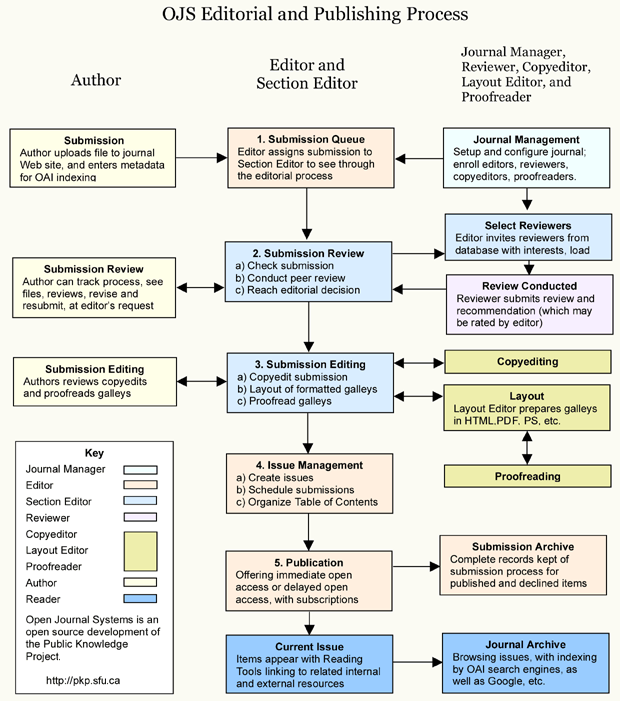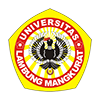Introduction
Jurnal Pendidikan Kewarganegaraan with registered number ISSN 2303-2909 (print), ISSN 2540-8712 (online) is a scientific journal published Program Studi PPKn, Universitas Lambung Mangkurat in collaboration with Asosiasi Profesi Pendidikan Pancasila dan Kewarganegaraan Indonesia (Indonesia Association of Pancasila and Civic Education/AP3KnI). It is at the national level that covers a lot of common problems or issues related to the citizenship studies i.e. civic education (curriculum, teaching, instructional media, and evaluation), political education, law education, moral education, and multicultural education.
How to Write the Title, the Name, and the Author’s Address
The title of the manuscript should be written on the top of the first page with the center text alignment. Meanwhile, the author’s name (without an academic degree), and the affiliation address of the author should be written with the center text alignment also under the title of the article. The author should give two line spaces between the title and the author’s name. Then, the space between the author’s affiliation address and the abstract title is one space. The keywords must be written below the overall abstract for all words. Those should be separated by a semicolon and maximally four words. Moreover, the title of the article that is written in Bahasa Indonesia should be also stated in English either.
The responsible author, the correspondence author, or the corresponding author must be written first and then followed by the second, the third, and so on. The communication regarding the article revision and the final statement will be informed via email to the corresponding author only. If there is more than one author, the author’s names should be written down separately by a comma (,). If the author’s name consists of at least two words, the first name should not be shorted. If the author’s names are only one word, it should be written as it is. However, in the online version, it will be written in two words with the same name repeatedly for the purpose of the metadata indexing.
TheManuscript General Guidelines
The manuscript text general guidelines are as follows:
- The manuscript is the authentic research result that has not been published yet in other publication media or publishing houses.
- The manuscript does not contain any plagiarism element. The editorial board will directly reject the text that indicates plagiarism.
- The submission and the publication processes are free, without any additional fees.
- The manuscript that has been written under the guidelines of Jurnal Civics (in MS Word format, use this article template) must be submitted through Online Submission System using Open Journal System (OJS) on https://ppjp.ulm.ac.id/journal/index.php/pkn, choose only one procedure. Then, register as one of the author or reviewer.
- The manuscript online submission can be viewed on the part of online submission guidelines.
- The manuscript which is inappropriate with the Jurnal Civics writing guidelines will be returned to the author before the reviewing process.
- The manuscript should contain several aspects of a scientific article as follows: (subtitles as the order), which are: (a) the title of the article, (b) the author’s name (no academic title), (c) the affiliated author’s address, (d) the author’s email (e) the abstract and the keywords, (f) the introduction, (g) the research method (h), the research findings and discussion (i), the conclusion (j), the references.
- The subtitles included in the discussion part (Introduction, Research Methods, Result and Discussion, and Conclusion) shouldn’t be numbered. The subtitles are written in the bold and title case format. It uses the left text alignment without an underline. The next expanded subtitles should be written in the bold and sentence case format, It should use the left text alignment and the numbering format level two.
- The manuscript can be written both in Bahasa Indonesia or English with the standard language. The manuscript should consist of ten (10) to twenty (20) pages including pictures and tables. The manuscript text ought to be written as this article template in the camera ready mode. The article is written on A4-sized papers (210x297 mm), with custom margins as follows: top and left 3 cm; bottom and right 2 cm.
- The text of the articles must be in Time New Roman, 12pt font size, 15.5 line-spacing, separated into two columns (except for the main title, the author’s name, and the abstract) with the space between columns 10 mm.
- The words from uncommon or foreign languages are stated in Italic format. For the article in Bahasa Indonesia, foreign terms or words should be avoided. Each paragraph started 10 mm from the left side border while there are no spaces between paragraphs. All numbers are written in Arabic numbering format, except for the new sentence.
- The tables and pictures are placed in the text group after the referenced tables or pictures. Each picture must be given a caption (Figure Caption) and be numbered in Arabic numbering format below the picture followed by the picture title. Each table must be given a table title (Table Caption) and numbered in Arabic numbering format above the table followed by the table title. The pictures attachment should be guaranteed that they can be printed well (font size, resolution and line space are clearly seen). The picture, the table, and the chart should be placed in the center between text groups. If it has a bigger size, it can be placed in the center of the page. The table should not contain vertical lines, while horizontal lines are allowed only for the important point.
The Guidelines for the Manuscript Body Text
The title of the manuscript: The title should be informative and be written both briefly and clearly. It cannot diverse multi interpretations. It has to be pinpoint with the issues that will be discussed. The beginning word is written in the capital case and symmetrically. The article title does not contain any uncommon abbreviation. The main ideas should be written first and followed then by its explanations. The article title should be written within maximally 20 (twenty) words in Bahasa Indonesia or in English, 12pt-sized font, with the bold selection and in the center text format,
An abstract is written in Bahasa Indonesia and in English either. The text must be in Time New Roman, 11pt font size, 1 line-spacing, within 175-250 words maximum and followed by five keywords. The abstract must contain: aims as the project, methods, result, and conclusion.
Introduction: The introduction must contain (shortly and consecutively) a general background and a literature review as the basic of the brand new research question or show the main limitation of the previous researchers and to solve it (gap analysis), show the scientific merit or novelties of the paper, and the hypothesis. In the final part of the introduction, the purpose of the article writing should be stated. In the scientific article format, it does not allow to write down the references as in the research report. They should be represented in the literature review to show the brand new of the scientific article.
Methods: The method is implemented to solve problems, including analytic methods. The methods used in the problem solving of the research are explained in this part.
Discussion and Result: This part consists of the research results and how they are discussed. The results obtained from the research have to be supported by sufficient data. The research results and the discovery must be the answers or the research hypothesis stated previously in the introduction part. The discussion should explore the significance of the results of the work, not repeat them. Make the discussion corresponding to the results, but do not reiterate the results.
The following components should be covered in the discussion: How do your results relate to the original question or objectives outlined in the Introduction section (what/how)? Do you provide interpretation scientifically for each of your results or findings presented (why)? Are your results consistent with what other investigators have reported (what else)? Or are there any differences?
Conclusion: This is the final part containing conclusions and advice. The conclusions will be the answers of the hypothesis, the research purposes, and the research discoveries. The conclusions should not contain only the repetition of the results and discussions. It should be the summary of the research results as the author expects in the research purposes or the hypothesis. The advice contains suggestions associated with further ideas from the research.
References: All the references that used in the article must be listed in this part. In this part, all the used references must be taken from primary sources (scientific journals and the least number is 80% from all the references) that published in the last ten years. Each article should have at least ten references.
TheGuidelinesfor theCitationsand References
All the served data or quotes in the article taken from the other author articles should attach the reference sources. The references should use a reference application management such as Mendeley. The writing format that used in Jurnal Pendidikan Kewarganegaraan follows the format applied by APA 6th Edition (American Psychological Association).
TheGuidelinesfor theLiterature Reviews
The literature reviews should use a reference application management such as Mendeley. The writing format that used in Jurnal Civics follows the format applied by APA 6th Edition (American Psychological Association).
TheOnlineSubmissionManuscript Guidelines
The manuscript text must be submitted by one of two systems (second procedure is more preferable):
The document should be submitted by Online Submission System in the Jurnal Pendidikan Kewarganegaraan portal HERE.
- Firstly, the author should register as either an author or reviewer (checking role as author or reviewer) in the “Register” or HERE.
- After the registration step is completed, log in as an author, click on “New Submission”. The article submission stage consists of five stages, such as: (1). Start, (2). Upload Submission, (3). Enter Metadata, (4). Upload Supplementary Files, (5). Confirmation.
- In the “Start” column, chose Journal Section (Full Article), check all the checklists.
- In the “Upload Submission” Columns, upload the manuscript files in MSWord format in this column.
- In the “Enter Metadata” columns, fill in with all the author data and affiliation. Including the Journal Title, Abstract and Indexing Keywords.
- In the “Upload Supplementary Files” columns, the author is allowed to upload supplementary files, the statement letter, or any other else.
- In the “Confirmation” columns, if the data you entered is all correct already, then click “Finish Submission”.
- If the author has difficulties in the submission process through the online system, please contact Jurnal Pendidikan Kewarganegaraan at https://ppjp.ulm.ac.id/journal/index.php/pkn/about/contact.
Example for the body note style
(Steenbrink, 1984, p. 32)
Examples for Bibliography
Crick, B. (1998). Education for citizenship and the teaching of democracy in schools. Final report of the advisory group on citizenship. London. http://doi.org/10.1177/014473949901900204
Davies, I., Shirley, I. G., & C.Riley. (2003). Good citizenship and educational provision. British Educational Research Journal (Vol. 27). London and New York: Falmer Press and Taylor & Francis.
De Groot, I. (2011). Why we are not democratic yet: The complexity of developing a democratic attitude. In W. Veugelers (Ed.), Education and humanism: linking autonomy and humanity (pp. 79–94). Rotterdam, Boston, Taipei: Springer Science & Business Media.
Deth, J. W. van. (2013). Citizenship and the civic realities of everyday life. In M. Print & D. Lange (Eds.), Civic education and competences for engaging citizens in democracies. Rotterdam, Boston, Taipei: Sense Publisher.
Gibson, C., & Levine, P. (2003). The civic mission of schools. New York.
Johnson, L., & Morris, P. (2010). Towards a framework for critical citizenship education. The Curriculum Journal, 21(1), 77–96. http://doi.org/10.1080/09585170903560444








